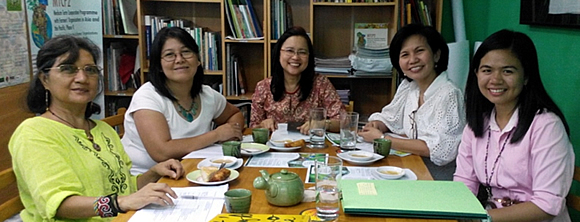Inclusive Value Chains

In the past, there was an observed tendency for inordinate focus on production systems and productivity improvement in the traditional orientation of policy research, discussions and operational frameworks of agriculture-focused institutions, including and especially agriculture ministries. There was a tendency to consider activities beyond the farm (or fisheries) toward end-consumers to be within the purview of industry ministries and industry analysts, and beyond the scope of the agricultural system. In recent years, this thinking has given way to a more systems view that recognizes the importance of considering the entire agricultural value chain spanning the range from farm finance and provision of farm inputs, through logistics and value adding/processing activities, on to getting the products to the final consumers.
The shift in focus from the production system alone to the entire value chain has helped research and policy making to be more responsive to actual and long-standing needs of rural dwellers. Operationally, this shift in focus to a wider value chain perspective forces governments to either establish strong inter-agency coordination mechanisms (especially between agriculture and industry ministries), or to redefine ministries’ scope of authority altogether. Vietnam, for example, has a Ministry of Agriculture and Rural Development, and Malaysia has a Ministry of Rural and Regional Development, a departure from the traditional and more limited concept of a Ministry of Agriculture. Agricultural development could thus be addressed and managed more holistically in the wider context of managing the rural economy, rather than as a production system alone.
Looking at the links in the value chain, at one end is the provision of adequate access to credit to small farmers, which has been a traditional and persistent challenge in the developing countries of the region. The success of microfinance schemes and programs across Asia, which has originated and flourished primarily in the non-agricultural context, has inspired efforts to adapt the approach to the financing requirements of small farmers, although this is not without its difficulties. Some Southeast Asian countries have been more successful than others in small farm finance programs, and may have important lessons to share with those where small farm credit access remains an obstacle to uplifting the lives of farming communities.
Transport and logistics is another significant element in the agricultural value chains, and is a particular challenge in the archipelagic economies of the region such as Indonesia and the Philippines. Wider intra-ASEAN trade in agricultural products will also hinge on efficient logistics systems interconnecting the ASEAN economies. Following the success of the national roll on-roll off (Ro-Ro) nautical highway, the Philippines has been at the forefront of championing the establishment of an ASEAN Ro-Ro system especially across the Brunei-Indonesia-Malaysia-Philippines East ASEAN Growth Area (BIMP-EAGA) subregion.
Where farmers are unable to obtain a more commensurate share of the final value of the product of their labor, a key factor is often a monopsonistic or single-buyer feature in the value chain. In the Philippines, for example, processing of major farm products such as rice, sugar or coconut is typically done by a single large processing firm (rice mill, sugar central or coconut oil mill) in a particular area. This gives them the market power to dictate lower buying prices for the product, which translates to lower farm gate prices than could have prevailed had there been more competition in the processing/value-adding sector. A more inclusive value chain would thus have more, smaller processors who could be alternative buyers of any particular farmer’s produce. Even less inclusive is a structure wherein a large food manufacturer or service company vertically integrates and goes into large-scale farming of its primary raw materials, thereby taking control of its entire value chain. Instead, companies like Nestle and Jollibee have opted to procure their raw materials (coffee beans and onions, respectively) from small farmers, thereby giving the latter a firm role in a more inclusive the value chain.
Efficient value chains foster resilience, especially in the economic dimension; inclusive value chains foster equity. When value chains transcend national boundaries, as has become common in certain manufacturing industries (e.g., electronics, motor vehicles) in ASEAN, these regional value chains or production networks foster stronger regional integration as well. Wider opportunities for regional value chains for agricultural products remain to be explored.


 Download Conference Summary Report
Download Conference Summary Report Download Book of Abstracts
Download Book of Abstracts
 Download Conference Flyer
Download Conference Flyer


